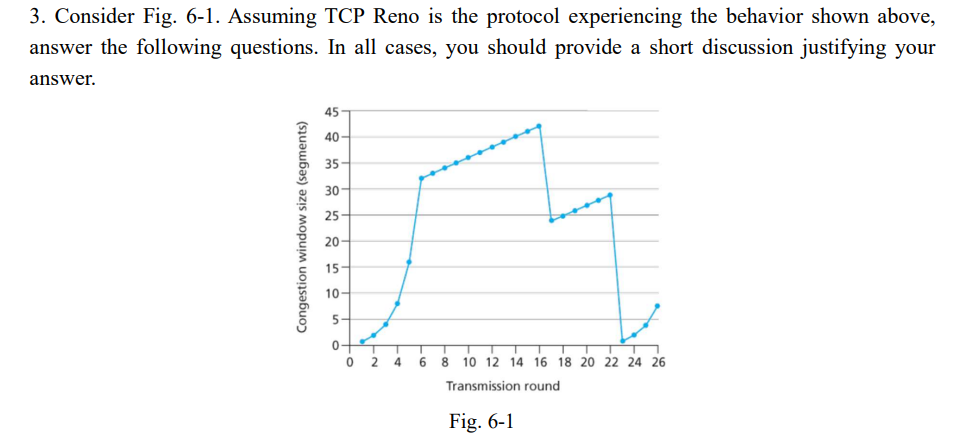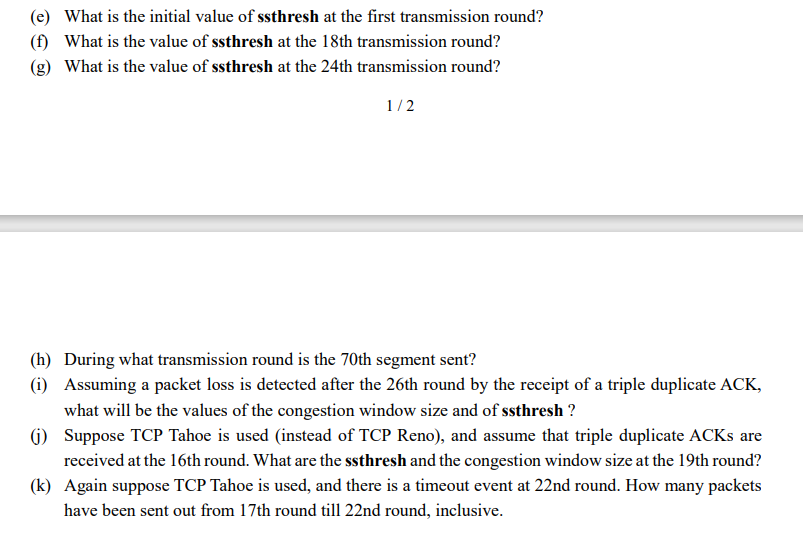Home /
Expert Answers /
Computer Science /
3-consider-fig-6-1-assuming-tcp-reno-is-the-protocol-experiencing-the-behavior-shown-above-ans-pa592
(Solved): 3. Consider Fig. 6-1. Assuming TCP Reno is the protocol experiencing the behavior shown above, ans ...
3. Consider Fig. 6-1. Assuming TCP Reno is the protocol experiencing the behavior shown above, answer the following questions. In all cases, you should provide a short discussion justifying your answer. Fig. 6-1
(e) What is the initial value of ssthresh at the first transmission round? (f) What is the value of ssthresh at the 18th transmission round? (g) What is the value of ssthresh at the 24th transmission round? (h) During what transmission round is the 70th segment sent? (i) Assuming a packet loss is detected after the 26th round by the receipt of a triple duplicate ACK, what will be the values of the congestion window size and of ssthresh ? (j) Suppose TCP Tahoe is used (instead of TCP Reno), and assume that triple duplicate ACKs are received at the 16th round. What are the ssthresh and the congestion window size at the 19th round? (k) Again suppose TCP Tahoe is used, and there is a timeout event at 22nd round. How many packets have been sent out from 17th round till 22nd round, inclusive.
Expert Answer
(e) Initial value of ssthresh at 1st transmission round:Answer is 30At the first transmission round, the congestion window size reduces from 60 to 30 after a packet loss. When TCP Reno detects a packet loss, it has to enter a fast recovry phase, where it reduces the congestion window to half of its current value and it sets the ssthreshold to half of the congestion window size before the packet loss occurred. So ssthreshold = 60/2 = 30

